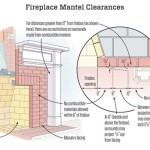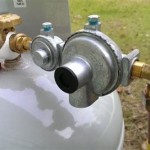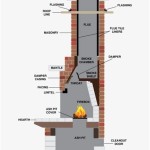The Enduring Appeal of Curved Fireplace Mantels
Fireplace mantels, architectural elements traditionally designed to frame a fireplace opening, have evolved from purely functional components to significant design features that contribute to the overall aesthetic of a room. Among the various mantel styles available, the curved fireplace mantel stands out for its ability to introduce softness, elegance, and visual interest to a space. This article will explore the characteristics, benefits, and considerations associated with choosing a curved fireplace mantel, examining its historical context and contemporary applications.
The curved shape, in contrast to the sharp angles of traditional rectangular mantels, offers a sense of fluidity and grace. This design choice can soften the hard lines often found in architectural design, creating a more inviting and comfortable atmosphere. The curve can be subtle, a gentle arc that adds a touch of sophistication, or more pronounced, creating a dramatic focal point. Regardless of the degree of curvature, the effect is generally one of visual harmony, drawing the eye and creating a sense of balance within the room.
Historically, curved elements have been employed in architecture to convey a sense of grandeur and sophistication. Roman arches, vaulted ceilings, and curved staircases are all testaments to the enduring appeal of this design principle. The curved fireplace mantel inherits this historical legacy, bringing a touch of classical elegance to modern interiors. While often associated with traditional design styles, the curved mantel can also be successfully integrated into contemporary spaces, offering a counterpoint to minimalist aesthetics and adding a touch of warmth and character.
The materials used in the construction of curved fireplace mantels are diverse, ranging from traditional hardwoods like oak, mahogany, and cherry to modern materials like medium-density fiberboard (MDF) and engineered stone. The choice of material will depend on the desired aesthetic, budget, and functional requirements. Hardwoods offer natural beauty, durability, and the ability to be intricately carved, but they are typically more expensive than other options. MDF, on the other hand, is a cost-effective alternative that can be easily molded into complex shapes and painted or veneered to mimic the appearance of wood. Engineered stone provides a durable and low-maintenance option, often chosen for its sleek and contemporary look. Regardless of the material selected, the craftsmanship and attention to detail are crucial in ensuring a high-quality and visually appealing final product.
Enhanced Aesthetic Appeal and Visual Softening
The primary advantage of a curved fireplace mantel lies in its ability to enhance the aesthetic appeal of a room. The curve itself introduces a visual softness that is often lacking in spaces dominated by straight lines and sharp angles. This softening effect can be particularly beneficial in modern interiors, where minimalist design principles often prioritize clean lines and geometric forms. A curved mantel can provide a welcome contrast, adding a touch of warmth and personality to an otherwise stark environment.
Furthermore, the curved shape can create a sense of visual flow, guiding the eye and creating a more harmonious composition within the room. This is particularly important in spaces where the fireplace serves as a focal point. The curve draws attention to the fireplace without being overly imposing, creating a balanced and visually pleasing effect. The mantel acts as a frame, highlighting the firebox and anchoring the surrounding décor. The absence of sharp corners can also make the space feel more open and inviting, contributing to a sense of relaxation and comfort.
The versatility of the curved mantel design allows it to be adapted to a wide range of architectural styles. In traditional settings, a elaborately carved curved mantel can complement ornate moldings and intricate detailing, enhancing the room’s overall sense of elegance. In contemporary spaces, a simpler, more streamlined curved mantel can provide a subtle touch of sophistication without overwhelming the minimalist aesthetic. This adaptability makes the curved mantel a valuable design element for homeowners seeking to create a visually appealing and personalized space.
Versatile Design Integration and Style Adaptability
The curved fireplace mantel is not limited to a specific design style. Its versatility allows for seamless integration into a variety of interior design schemes, from traditional and transitional to contemporary and even rustic. This adaptability stems from the fact that the curve itself is a fundamental design element that can be interpreted in countless ways, depending on the materials used, the degree of curvature, and the overall style of the mantel.
In traditional settings, curved mantels often feature ornate carvings, intricate moldings, and rich finishes, reflecting the grandeur and elegance of historical design styles. These mantels are often crafted from hardwoods like mahogany or cherry and may be adorned with decorative details such as fluting, dentil molding, and acanthus leaves. The curves are typically more pronounced, creating a dramatic focal point that complements the room’s overall aesthetic.
Transitional designs often incorporate a blend of traditional and contemporary elements, and the curved mantel can be adapted to reflect this hybrid approach. These mantels may feature simpler carvings or moldings and may be crafted from a wider range of materials, including engineered wood and stone. The curves are often more subtle, creating a sense of understated elegance that complements the room’s balanced aesthetic.
Contemporary interiors often embrace minimalist design principles, and the curved mantel can be adapted to this aesthetic by focusing on clean lines, simple shapes, and a limited palette of materials. These mantels may be crafted from materials like concrete or metal and may feature a smooth, unadorned surface. The curves are often subtle, creating a sense of visual interest without overwhelming the minimalist design.
Even rustic interiors can benefit from the addition of a curved fireplace mantel. In these settings, the mantel may be crafted from reclaimed wood or other natural materials and may feature a more organic and less refined aesthetic. The curves can be intentionally imperfect, adding to the rustic charm of the space.
Functional Considerations and Installation Requirements
Beyond its aesthetic appeal, the curved fireplace mantel must also meet certain functional requirements. The primary function of the mantel is to provide a non-combustible surface above the fireplace opening, protecting the wall and any decorative items placed on the mantel from the heat of the fire. Building codes typically specify minimum distances between the fireplace opening and combustible materials, and the mantel must be designed and installed to comply with these regulations. The specific requirements will vary depending on the type of fireplace, the fuel used, and local building codes. It is crucial to consult with a qualified professional to ensure that the mantel meets all applicable safety standards.
The installation of a curved fireplace mantel can be more complex than the installation of a traditional rectangular mantel, particularly if the mantel is custom-made or features intricate detailing. The curved shape requires precise measurements and careful alignment to ensure a proper fit and a visually appealing result. The mantel must be securely attached to the wall using appropriate fasteners, taking into account the weight of the mantel and the type of wall construction. In some cases, it may be necessary to reinforce the wall to provide adequate support. For complex installations, it is advisable to hire a professional installer with experience in working with curved elements.
Maintenance is another important consideration. The materials used in the construction of the mantel will determine the appropriate cleaning and care procedures. Hardwood mantels may require periodic polishing or refinishing to maintain their beauty and protect them from damage. Stone mantels may require sealing to prevent staining. It is important to follow the manufacturer’s recommendations for cleaning and maintenance to ensure the longevity and beauty of the mantel. Regular cleaning will also help to prevent the buildup of dust and soot, which can detract from the mantel’s appearance and potentially pose a health hazard.
In conclusion, the curved fireplace mantel offers a unique and compelling design option for homeowners seeking to enhance the aesthetic appeal of their living spaces. Its ability to soften lines, add visual interest, and adapt to a variety of design styles makes it a versatile and valuable element of interior design. Careful consideration of the functional requirements, installation procedures, and maintenance needs is essential to ensure a safe, beautiful, and long-lasting addition to any home.

Simple Spring Mantel Ideas Joyful Derivatives

Mantel Shelves Alan Harp Design

Pin On Fall

Mantel Shelves Alan Harp Design

Curved Box Beam Mantle

Simple Spring Mantel Ideas Joyful Derivatives

Curved Box Beam Mantle

Rochester Victorian Mantel

Curved Mantle My Husband Made Fireplace Shelves Facade

Curved Fireplace Stone Mantel Remodel
Related Posts








